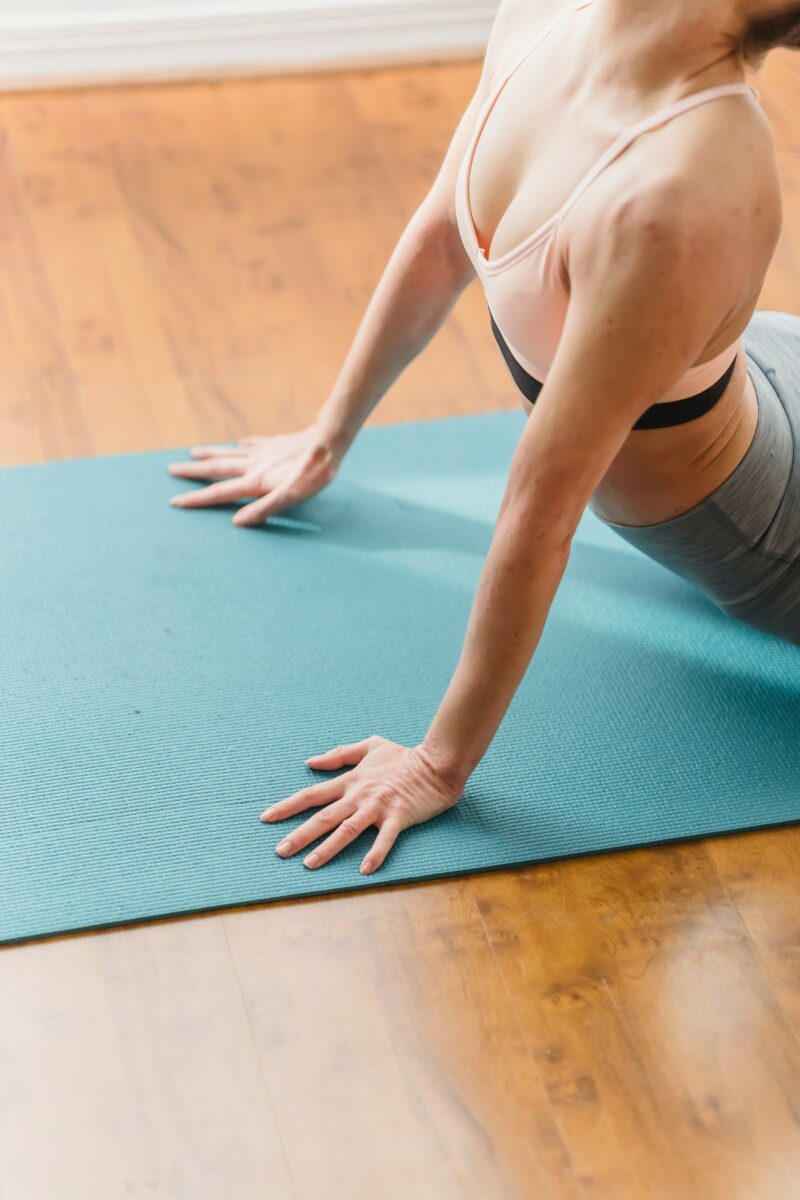
Back pain doesn’t just affect couch potatoes – it’s a recurring problem among runners too. While you’re moving, you feel great, but it hurts if you spend any length of time crashed on the couch, slumped in an office chair, or out for a sociable evening with friends. Afterward, standing up is no fun at all. It strains and squeezes the lower back, and you need to turn and stretch every which way first before you can move again without pain. Here are a couple of tips & tricks to help you avoid this situation.
Why are back exercises so important for runners?
If you want to perform at your best, then a healthy back is just as important as fit legs: if the back muscles are weak, the upper body is not stable. This robs you of energy that is needed in your legs. And this in turn has a detrimental impact on your pace and can even lead to poor posture and overstraining injuries. The general opinion that you go jogging to get fit unfortunately falls short of the reality. Which is why you need to strengthen your deep core muscles with comprehensive and effective training.
Running itself is a peak performance for the human body. Suddenly, we expect our muscles to hold our entire body mass upright and stable, rather than constantly moving. So: start doing back exercises and get your running shoes on! But make sure they’re the right ones, because your choice of running shoes has an impact on your training and your back health too.
What are the most effective exercises for strengthening your back?
We’re going to show you a couple of back exercises that you can easily do at home without equipment. A mat would be helpful, but you can also use a soft towel if you don’t have one. These exercises aim to mobilize and strengthen your whole back:
- Upper body rotation while standing: Stand upright with your legs hip-width apart. Start rotating your upper body one way and then the other. Keep your hips facing forward and follow the movement with your arms, moving your chest at the same time. Do ten to 20 reps. This exercise mobilizes the upper back and shoulder girdle.
- Lying t-stretch: Lie on your left side with knees bent and arms stretched out to the left. Lift the right arm and move it in a big arc as far as you can over to the right. Make sure you stretch evenly from the left hip to the right shoulder. Hold the stretch for 30 seconds and then change side. Do eight to twelve reps on each side. This exercise is particularly good for the lower back and lumbar spine.
- Lying back extensions: Lie flat on your stomach, press your pelvis into the floor, interlock your arms behind your head, and lift head, shoulders, and chest slowly off the floor. Hold the position for five seconds and repeat the exercise ten times. This exercise is a great way to strengthen the entire back and buttocks.
- Cat/cow stretch: Start on your hands and knees and slowly push your back upward one vertebra at a time. Keep your gaze on your bellybutton and pull it inward. Hold the cat stretch for a few seconds. Then start to push the back downward again one vertebra at a time and move your gaze forward and up until you are in the cow position. Repeat these movements five times while being conscious of your breath. This exercise mobilizes the whole back from lower back and lumbar spine through upper back / shoulder girdle / neck.
- Superman: Lie on your stomach on a soft surface and stretch your legs and arms out. Now raise the left leg and right arm around 15 to 30 cm at the same time, lower them (without touching the floor), and lift them again. Then do the same with the right leg and left arm. Repeat from the start ten times and gradually increase the number of reps over time – a great strengthening exercise for the whole back.

Several of these exercises are also yoga positions. So, you can try out some of our exercises, or you can extend your back training with a short yoga session. You don’t need any expensive equipment to do yoga at home, and there are lots of good reasons to make yoga part of your daily routine.
What do you need to watch when doing back exercises?
Find an exercise that you like, find easy to do, and that motivates you. Then find two exercises that are harder for you. See the back exercises as an opportunity to work on your shortcomings, build up your muscles, and optimize your movement. The harder you find an exercise, the more movement quality and performance ability you will gain. Back exercises or yoga are a great way to boost your performance as part of your recovery after sport.
How often should I do back exercises?
We train our body 24 hours a day, mostly while passively sitting at a desk at work and lying in bed asleep.
Little tip: to effectively treat or prevent back pain, you should make your back exercises for pain part of your daily routine.
Find up to three back exercises to improve your fitness and repeat them ten to 20 times every day for two weeks. After two weeks, change the exercises to set new training stimuli. If you want to improve the stability of your whole body, you can also try functional training. This way you’re sure not to get bored with the back exercises.

What’s the best way to include effective back exercises in your daily routine?
We all know what it’s like – we spend too much time sat down. Far too much – 7.5 hours per day to be precise. Whether we want to or not, some office jobs don’t give us any choice. The main cause of back pain is a lack of movement, weak back muscles, and constant sitting at the workplace. Regular movement is the basis for a healthy back. Constantly change your sitting position to make sure you keep moving during your working day.
We’ve put together four back exercises for the office especially for your daily work routine. They’re exercises that you really can do absolutely everywhere – without a resistance band or exercise ball. Unnoticed, here and there, and regularly during work:
- Circle your shoulders: Gets your whole upper body moving, stretches your chest muscles, and relaxes your neck. Interval: Circle 10 x forwards, 10 x backwards.
- Stretch your neck: Sit upright on your chair and pull in your stomach so that you don’t get a hollow back. Look forward then tip your head toward your right shoulder while continuing to face forward, as if you are trying to lie your ear on your shoulder. Keep your shoulders down. Stretch your left arm down, pulling with your left hand by bending it 90 degrees. Hold for 30 seconds on each side.
- Stretch your glutes and lower back muscles: Sit upright, place your right foot on your left knee, and slowly lean forward. This stretches your back leg, glute, and back muscles. Only hold for 20 seconds on each side.
- Contract your shoulder blades: Pull your arms back, interlock your hands behind your back. Now slowly lift your arms as high as you find comfortable. Keep your shoulders lowered, your shoulder blades come together. This exercise mobilizes your shoulders, arms, chest muscles, and upper back. Hold 3 x 20 seconds.
Set yourself small reminders on your calendar. If you do one of the back exercises every two hours, the office workout will quickly become part of your daily routine, and you’ll see a reduction in those everyday pains. 😉
Image sources: pexels-ketut-subiyanto-4426321, pexels-marta-wave-6454060, pexels-andrea-piacquadio-3966781